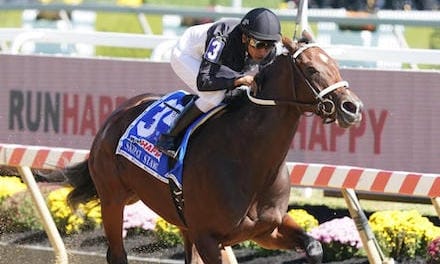first published in the January 2019 Equiery print edition
In March of 2017, the U.S. Center for SafeSport opened its doors in Denver, Colorado. The first of its kind, the Center is a national non-profit focused on preventing all forms of abuse in sport. Specifically, the Center provides independent response and resolution services across the U.S. Olympic and Paralympic movements, which include all 29 breeds and disciplines governed by the U.S. Equestrian Federation.
Over the past two years, the USEF and those governing bodies that fall under it, such as the U.S. Eventing Association and U.S. Hunter/Jumper Association, have been sending notices to officials and members about how to comply with the SafeSport mandates and codes of conduct. As the Center continues to develop and amend these requirements, many equestrian athletes are left wondering what SafeSport is and who exactly has to undergo the mandated training.
What is SafeSport?
On February 14, 2018, President Trump signed into Federal Law S 534, the Protecting Young Victims from Sexual Abuse and Safe Sport Authorization Act of 2017. The bill amended the Ted Stevens Olympic and Amateur Sports Act of 1978. The law imposes general requirements on youth-serving amateur athletic organizations and includes child abuse prevention training for adult members who have regular contact with athletes that are minors. The bill extends to all sports that participate in interstate and/or international competition, not just equestrian sports.
The Center was authorized by Congress through this law to develop policies and procedures to prevent the emotional, physical and sexual abuse of amateur athletes. The Center receives reports of misconduct, conducts investigations, determines sanctions and informs National Governing Bodies for each sport, such as USEF, of sanctions against any persons for violations of the Center’s Safe Sport Code.
What is the Safe Sport Code?
The USEF put out a guide to the Safe Sport Policy (aka Code) that specifically spells out what is required of its members in regards to SafeSport. In general, SafeSport covers six primary types of misconduct: sexual misconduct, emotional misconduct, physical misconduct, bullying, harassment and hazing. The guidebook describes and discusses each of these types of misconduct with definitions and examples as well as what steps should be taken if someone suspects an individual of misconduct.
Most importantly, members should note that USEF is required to report any potentially criminal behavior to the appropriate law enforcement agencies. In addition, all reports of sexual misconduct and violations of the Safe Sport Policy that are of a sexual nature must be reported directly to the U.S. Center for Safe Sport. Reporting may be done anonymously.
Once reports are made, the Center begins to investigate.
The Policy also discusses training, education and background checks that are now required of USEF members.
To download the full Safe Sport Policy handbook, click here.
Who Needs SafeSport Training?
Initially, only officials, coaches and trainers were required to go through the SafeSport training modules. However, because there are no horse shows in the U.S. in which children are not present, on August 28, 2018, the USEF Board of Directors moved to require not only USEF officials to take the SafeSport training, but all USEF Competing Members who are 18-years-old or older. Members must complete the on-line training sessions within 30 days of renewing their membership.
In addition to competing members, all USEF licensed officials, Chefs d’Equipe, staff, board members, competition management, coaches, human physios, farriers, trainers, veterinarians and selectors hired or contracted by USEF must also complete the SafeSport training. Many officials already completed the training in 2018 and do not have to do it again.
Individuals who do not comply become ineligible to participate in USEF activities, including competitions, and will be placed on the SafeSport Ineligibility List until training requirements are fulfilled.
In addition, the USEF considers horse owners to be Competing Members, therefore owners must also comply with the SafeSport policy and undergo the training. If the horse is listed as owned by a farm, the policy does not apply. But, if the owner of the horse has an active USEF Competing Membership and is also 18-years-old or older, the owner must go through the training. If owners do not comply, their horses will not receive any USEF points and will not be able to compete in USEF-sanctioned competitions.
Currently, minors and parents do not need to go through the training process. However, SafeSport has developed a free SafeSport training module specifically for parents, and has created SafeSport Parent Toolkits for various minor age levels. There is a youth SafeSport training module in the works but has yet to be made public.
What Does This Mean for the 2019 Season?
Basically, any USEF member, licensed official and/or person hired by the USEF in any capacity, needs to take the SafeSport Training modules now. Although the website states the training will take no more than 90 minutes, the subject matter is heavy in nature and one might need to step away and do the training in smaller sessions.
Once completed, the USEF receives notification within 24-48 hours and the member’s online membership dashboard will reflect “SafeSport Training Completed.” The USEF will also notify any sub-organizations that the member belongs to.
Competition management should be checking that each member entered in their shows has completed the training while verifying USEF membership status. Those who ride horses for others will need to make sure that their owners have gone through the testing as well.
Since these SafeSport policies affect only USEF-sanctioned competitions, The Equiery wants to know if the policies have changed our readers’ competition plans for 2019. Send your comments to editor@equiery.com to let us know what you think.
Helpful Links
Below are a list of links related to the SafeSport movement.
SafeSport Frequently Asked Questions












